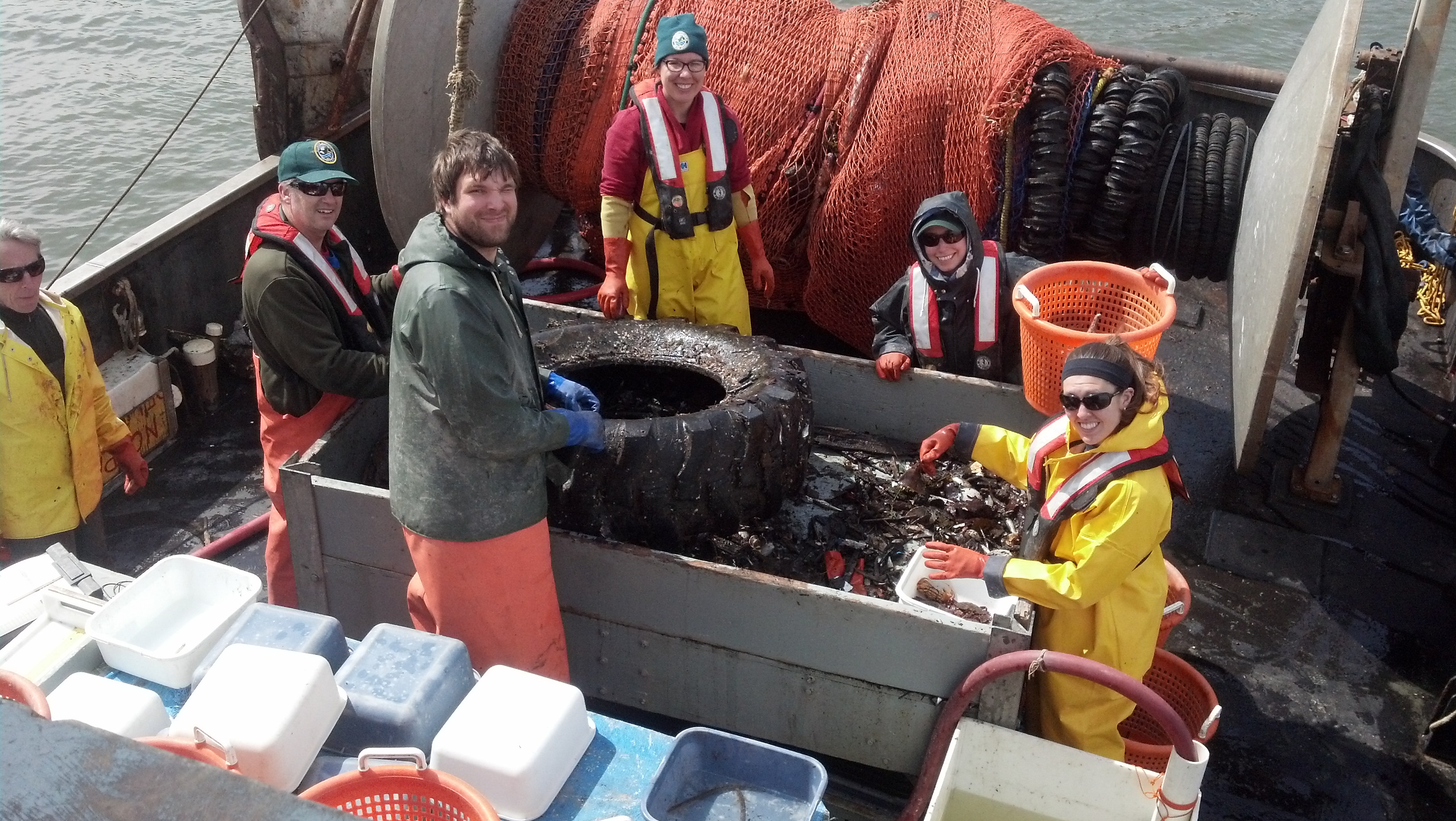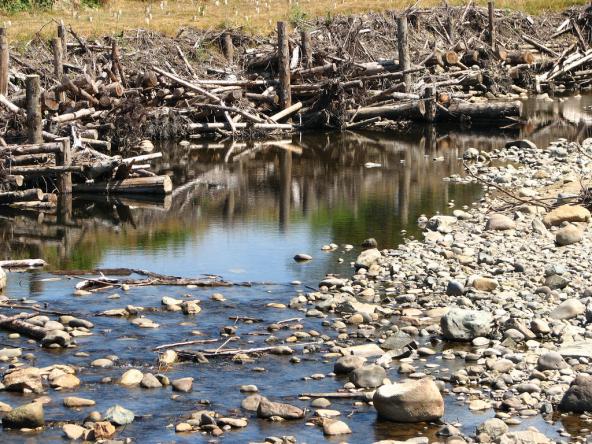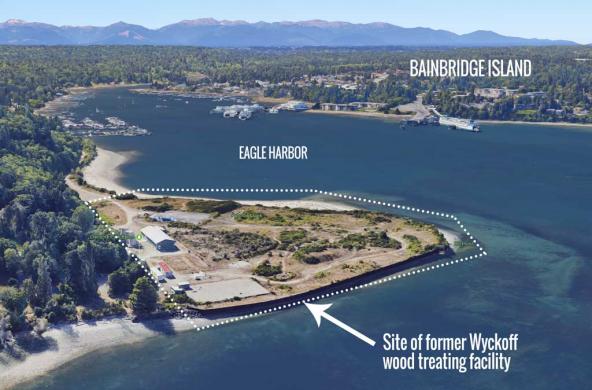
Toxic chemicals have been showing up in Puget Sound fish for more than a century, but consistent testing over the past 30 years has helped to reveal some unusual patterns of pollution.

In general, concentrations of toxic chemicals in fish have declined as controls have tightened on the release of contaminated water from industrial facilities, sewage-treatment plants and stormwater systems. Urban areas, where discharges remain a concern, tend to be the primary hotspots for pollution coming into the Sound.
Regular monitoring of toxic chemicals has helped researchers:
“We are changing people’s perspectives about contaminants throughout the (Puget Sound) watershed, including how such contaminants get into the food web,” said Sandie O’Neill, a research scientist with the Washington Department of Fish and Wildlife.
By measuring changes in contaminant levels, researchers can report whether conditions are improving or declining in various parts of Puget Sound, said O’Neill, affiliated with the state’s Toxics-focused Biological Observing System (T-BiOS). Ongoing monitoring also reveals whether cleanup actions are effective.
“The broader the management action or the broader the scope, the greater the need for monitoring,” she explained.
Such is the case with large-scale restoration efforts, whether in marine water or freshwater. For example, beginning in 1951, what was then the Washington Department of Fisheries promoted the removal of logs and any other forest debris from salmon streams. State officials believed that such debris — including “slash” left behind by logging operations — was blocking the migration of salmon.
By the 1980s, biologists realized that natural volumes of woody material in a stream create important habitat for salmon, such as resting pools, spawning gravel and places for salmon to hide from predators. Today, stream restoration efforts often include adding logs or even massive logjams — the same types of structures that were once actively removed.

If someone had monitored stream conditions before and after woody debris was pulled from the streams back in the 1950s, they might have seen that salmon were dependent on that structure, O’Neill said. The financial cost of removing the material and the habitat losses for salmon might have been avoided.
“I think it is really important that we monitor and understand the changes, which may or may not be natural,” she said.
Today, agencies funding restoration projects better understand the need to monitor changes over time, both at the project level and across the entire ecosystem. Still, there remains a tendency to fund construction work while short-changing the monitoring effort, O’Neill said.
“We don’t know everything about the ecosystem,” she noted. “We only know bits and pieces. Monitoring is basically the feedback to let us know if certain actions are working or if they need to be changed.”
Banning toxic chemicals typically comes after heated political battles. In many cases, long-term monitoring has proven that chemical bans can pay off, especially when dealing with dangerous pesticides, flame retardants and industrial chemicals.
“When you turn off the tap, you should see a rapid decline,” O’Neill said, noting that new strategies are sometimes needed when monitoring reveals the presence of persistent toxics — such as with PCBs, which still remain at dangerous levels in many marine organisms.
Washington state’s current toxics monitoring program — which is part of the Puget Sound Ecosystem Monitoring Program (PSEMP) — has evolved over time from a series of basic studies on marine life conducted in the 1970s by the National Oceanic and Atmospheric Administration.
Findings from those early studies shocked many Puget Sound residents, who learned for the first time that fish from some of the most beautiful bays and inlets were severely afflicted with liver disease caused by industrial pollution. For some chemicals, the urban bays of Puget Sound ranked among the most polluted in the nation.
Eagle Harbor on Bainbridge Island, a quiet waterway featuring a cross-Sound ferry terminal, appeared to be a typical rural inlet. But an extensive “dead zone” was discovered on the bottom of the harbor during NOAA studies in the early 1980s. It turned out that Eagle Harbor was contaminated with toxic creosote from a wood-treatment facility that had operated there for 80 years.
During an extensive cleanup under the federal Superfund program, contractors removed the worst contamination, and then laid down a layer of clean sand to entomb the remaining contaminants. Signs of life quickly returned. After further monitoring, the project was declared a success.

As studies of toxic hot spots continued into 1985, the newly formed Puget Sound Water Quality Authority wanted to know more about background levels of pollution throughout Puget Sound. Regular monitoring of fish tissue became part of an effort called the Puget Sound Ambient Monitoring Program, later renamed the Puget Sound Assessment and Monitoring Program (PSAMP).
During independent management reviews in 1995 and again in 2005, PSAMP was judged to be effective at carrying out monitoring tasks, but reviewers said the results of monitoring should have a greater influence on action plans to protect and restore Puget Sound.
Today, with restoration coordinated by the Puget Sound Partnership, monitoring for toxics contributes to a greater understanding of the Puget Sound food web and health assessments for:
Based on those studies, state toxicologists issue health advisories about which kinds of seafood from Puget Sound can be safely eaten and which should be avoided.
Monitoring also plays an essential role in tracking specific Vital Signs indicators, which serve as measures of recovery for the Puget Sound ecosystem. One group of indicators is the concentration of specific chemicals in various fish tissues. Declining concentrations suggest that conditions for the fish may be improving.
“We have continued to work closely with NOAA,” O’Neill said, noting that the federal agency tends to tackle narrow, focused studies. Meanwhile, about two-thirds of the work of the state toxics team involves ongoing long-term monitoring, while the other one-third involves investigating specific concerns often uncovered through monitoring.
One current study, for example, is to identify the source of toxic flame-retardant chemicals discovered in a hot spot near the mouth of the Snohomish River in Everett. An outfall from a sewage-treatment plant is suspected as a source. If confirmed, further tracking may be needed to address the problem.
Another current study is to determine whether resident chinook salmon from South Puget Sound are more contaminated with toxic chemicals than chinook from northern areas. The outcome of the study could alter the current health advisory, which is to limit consumption of resident chinook — known as “blackmouth” — from any part Puget Sound.
“We’re constantly tweaking our monitoring,” O’Neill said, “and if the research tells us to move in a new direction, then we do it.”
Main story: PCBs in fish remain steady while other toxics decline
A new study shows a surprising decline in some toxic chemicals in Puget Sound fish, while levels of PCBs increased in some cases. Scientists say the study shows that banning toxic chemicals can work, but old contaminants remain a challenge as they continue to wash into Puget Sound.

